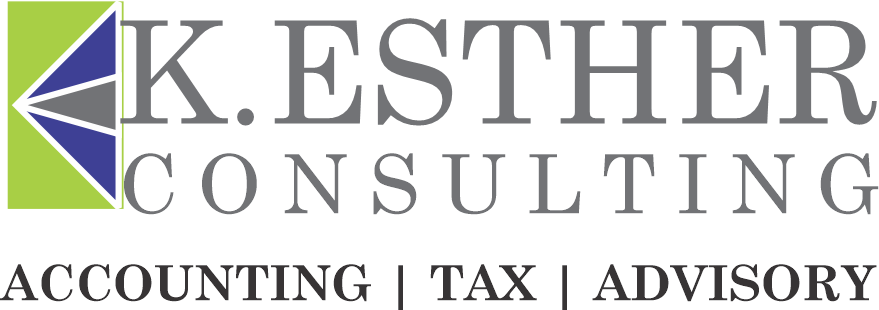
Value Added Tax Modification Order 2020
May 30, 2020
Stamp Duty in Nigeria
August 9, 2020Bookkeeping 101

What is Bookkeeping?
Book keeping is the process of tracking and recording all financial activities and transactions of a business.
As long as you are in business, bookkeeping does not end. It is a continuous activity that should be given priority especially for small businesses that do not have access to many members of staff.
The best way to go about bookkeeping is to make it a routine depending on the volume of transactions generated by your business.
For instance, a business just starting up can do bookkeeping once in a month because the business transactions are still few. A busy that is ongoing for a while however may not afford to do monthly bookkeeping because of the volume of her transactions.
So bookkeeping can be done daily, weekly, bi-weekly or monthly depending on the nature of the business and her volume of transactions.
The aim of bookkeeping is to record all the financial transactions of the business, so the aspect of routine is important to ensure that nothing skips the recording process.
Importance of bookkeeping
For a small business, bookkeeping is very important for the following reasons:
- It give a clear picture of the state of your business in terms of profitability.
- It gives you opportunity to catch your financial mistakes e.g payments by customers not reflecting in the bank records can easily be picked.
- It helps you to fully capture all your tax deductible expenses.
- It makes obtaining a loan easier because you have a record.
- It gives you a clear picture of all your key performance indicators (KPIs)
- It gives you confidence to face the tax man.
How do I go about my bookkeeping?
Have an understanding of your business accounts;
Accounting is the process of recording and analyzing financial information in a useful way (emphasis on useful way). The relationship between accounting and bookkeeping is that bookkeeping is the basis of accounting, because without records of financial data there is no analysis of financial record which is what accounting is all about.
Most people are in business to make money and that alone is enough reason to know that your financial information is very important. Your business has operations and activities that generate financial information and data.
The Almighty formula for Accounting is:
ASSETS= LIABILITY + EQUITY
| Asset | Liability | Equity |
| Cash | Bank Loan | Owner Equity |
| Account Receivable | Account Payable | Owners Withdrawal |
| Land | Tax payable | Share |
| Machinery | Prepayments | Retained Earnings |
| Equipment | Overdrafts | |
| Inventory | ||
| Building | ||
| Computers |
We have 4 Classes of Account for financial records. They include;
| Classification of Accounts | Accounts Involved | Increase(+) | Decrease (-) | Normal Balance |
| Assets | Cash, Furniture, Equipment, Inventories etc. | Dr | Cr | Dr |
| Expense | Salaries, Rent, Internet, Telephone, Purchases etc. | Dr | Cr | Dr |
| Liabilities | Amount payable, Loans etc. | Cr | Dr | Cr |
| Income | Commissions, Fees, Sales etc. | Cr | Dr | Cr |
| Equity | Shares, Owners contribution, Retained earnings etc. | Cr | Dr | Cr |
Every record of financial activities follows this rule above. Let us look at a simple illustration of cash and loan from the view of the customer and the bank.
Set up your own business accounts:
From your knowledge of the basics of business accounts. you need to set up your chart of business accounts peculiar to the nature of your business.This will include the common expenses incurred by your business such as internet, telephone, cost of sales etc. your assets, your liabilities and so on….This is usually called your chart of accounts when you are using a software.
Record your transactions as they go:
Remember the importance of sticking to a routine or schedule in order to fully capture all transactions.Follow the rule of reporting transactions above:Take for instance how to record transactions from two perspective.
| Item | For the Bank | For You |
| Cash in bank | Cr balance (Liability) | Dr balance (Asset) |
| Bank Loan | Dr Balance (Asset) | Cr balance (Liabilities) |
Let’s learn from Titi. She just started her business and she opened a corporate bank account with her business capital which represents her share capital of N1000000. To record this she Dr her Cash in bank account (asset) and Cr her shares accounts (equity). Later in the month she bought some machines at N250,000 for her operations. The machines she bought are assets so are the cash she used to buy them. So she debits her PPE (Property plant and equipment) account for the increase in the asset and credits her cash account for the reduction.
Now her bank balance is N750,000 her PPE account is N250,000 and her equity account is N1,000,000.
Therefore her account is balanced:
Asset= Liability +Equity
(750,000+250000) = (0+1,000,000)
As Titi’s business continue to grow she has records of income from her business as well as expenses all these she will record using the rules of accounting increase and decrease.
But not to worry capturing your data doesn’t have to be tedious. Most of the accounting software will do the work for you, all you have to do is key in your figures and then you have your accounts ready.
Store your records:
Remember to store information such as receipts, agreements, contracts and so on. For proof and reconciliations where necessary.
If you still need help with your bookkeeping please contact me:
Oluwakemik.estherconsulting@gmail.com

